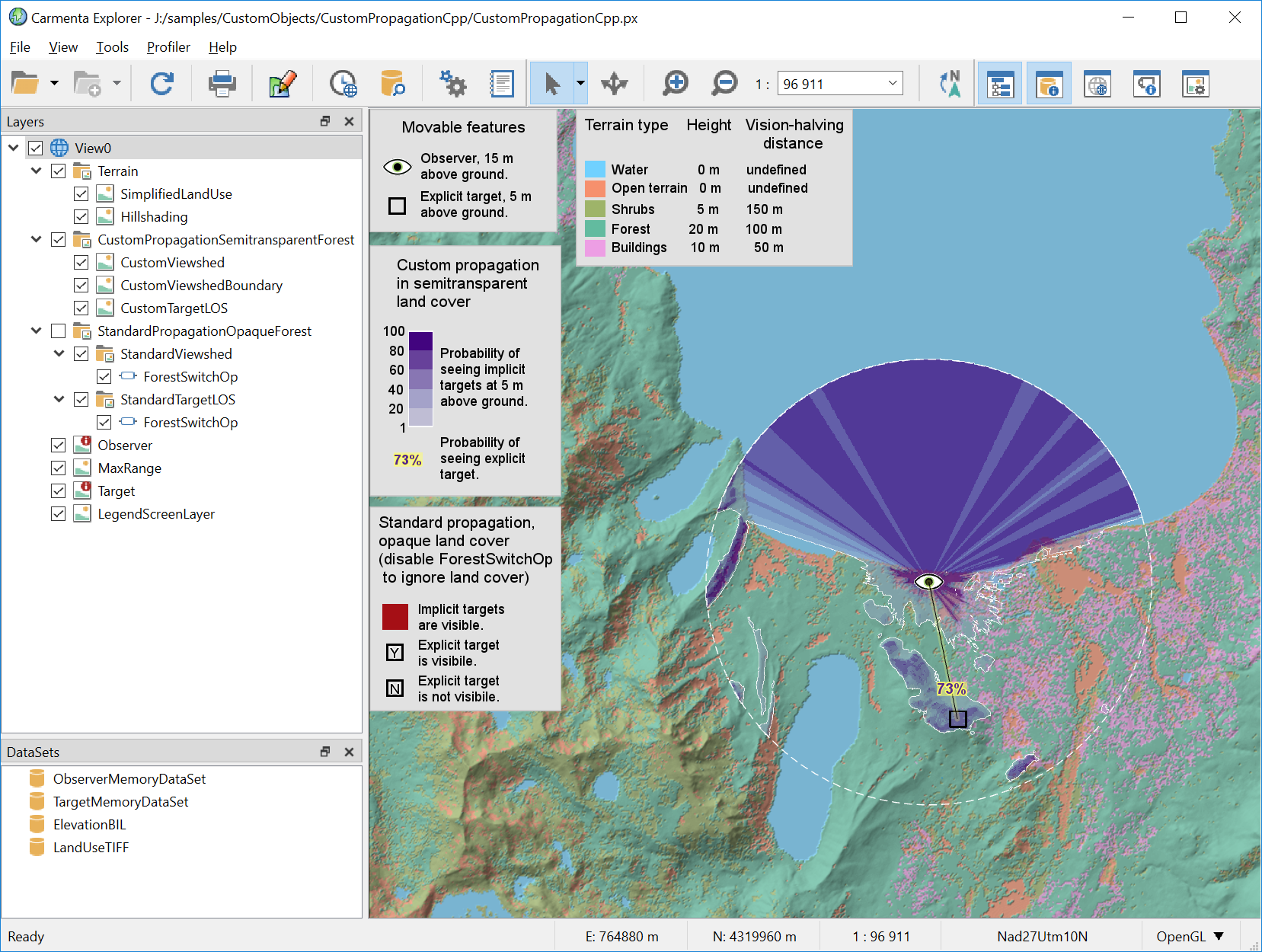LineOfSightOperator.CustomPropagation Property
Gets or sets a custom propagation proxy object that refers to custom-written code for propagation.
Syntax
public Propagation CustomPropagation { get; set; }Property Value
Default: null
A custom propagation proxy object that refers to custom-written code for propagation.
Remarks
A null value for this property will give you the standard line-of-sight propagation model of Carmenta Engine. The alternative is to use a CustomPropagationProxy that refers to your own code that defines a propagation model to be used along each vertical profile from the observer. So, you can implement a non-standard propagation model for line-of-sight, or other propagation models for radio, sound, ballistic trajectories, etc. However, a basic limitation is that the vertical profiles from the observer always follow straight routes, so you cannot implement a model where diffraction allows radio signals to bend sideways around a building, for example.
In the folder samples/CustomObjects you will find an example with a non-standard line-of-sight propagation model that assumes that forests and shrubs are semitransparent, and the generated raster indicates the probability of sight.
 |
In summary, a custom propagation model must provide a Propagate method that accepts a terrain profile along a ray from the observer and returns a collection of propagated values at certain requested indices of the profile; for details, see ICustomPropagation.
The operator will call the custom Propagate method as often as needed: a TargetLineOfSightOperator will call it once for each observer/target pair, while a LineOfSightOperator or an AirspaceCoverageOperator will call it many times per observer to generate either 2D rasters or volumetric viewsheds. However, volumetric viewsheds can be generated only if the propagated values represent a kind of heights, which the operator can find out by calling the ICustomPropagation.OutputType method of the custom object. If so, the propagated values will be interpreted as the bottom surface of the viewshed volume, while the top surface will be generated as for standard line-of-sight propagation. On the other hand, the custom output type could be Other and represent path loss in decibel, say, in which case an attempt to generate a viewshed volume will just throw an exception. Since all output variants from an AirspaceCoverageOperator are based on viewshed volumes in some way, it cannot handle the custom output type Other at all. The Other output type can be handled by a TargetLineOfSightOperator, but the operator will then work in a special continuous mode where it generates output attributes of type Double.
If you want a LineOfSightOperator to output only volumetric custom viewsheds, you can suppress the plain custom rasters by setting OutputMinVisibilityHeights = False, although this is not obvious from the property name.
When communicating with a CustomPropagation object, the operator will ignore some of its own properties and use them only for the top surface of the volumetric viewshed (if that is generated). The properties whose values do not affect the calls to the custom Propagate method are:
MaxDistanceType; the generated terrain profiles will assume that MaxDistance is horizontal.
MinVisibilityHeightType; the ICustomPropagation.OutputType method has a similar purpose.
SampleInterval, because custom propagation does not support an observer with a line geometry.
The CustomPropagation object still needs to figure out the height of the sensor and a suitable refraction factor, etc., but it must do so on its own, based on the values of the View.UpdateAttributes or the attributes and geometry of the current observer feature and possibly a current target feature. The custom object has a chance to do that when its ICustomPropagation.Prepare method is called.
Platforms
Windows, Linux, Android